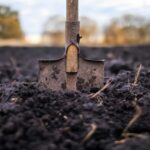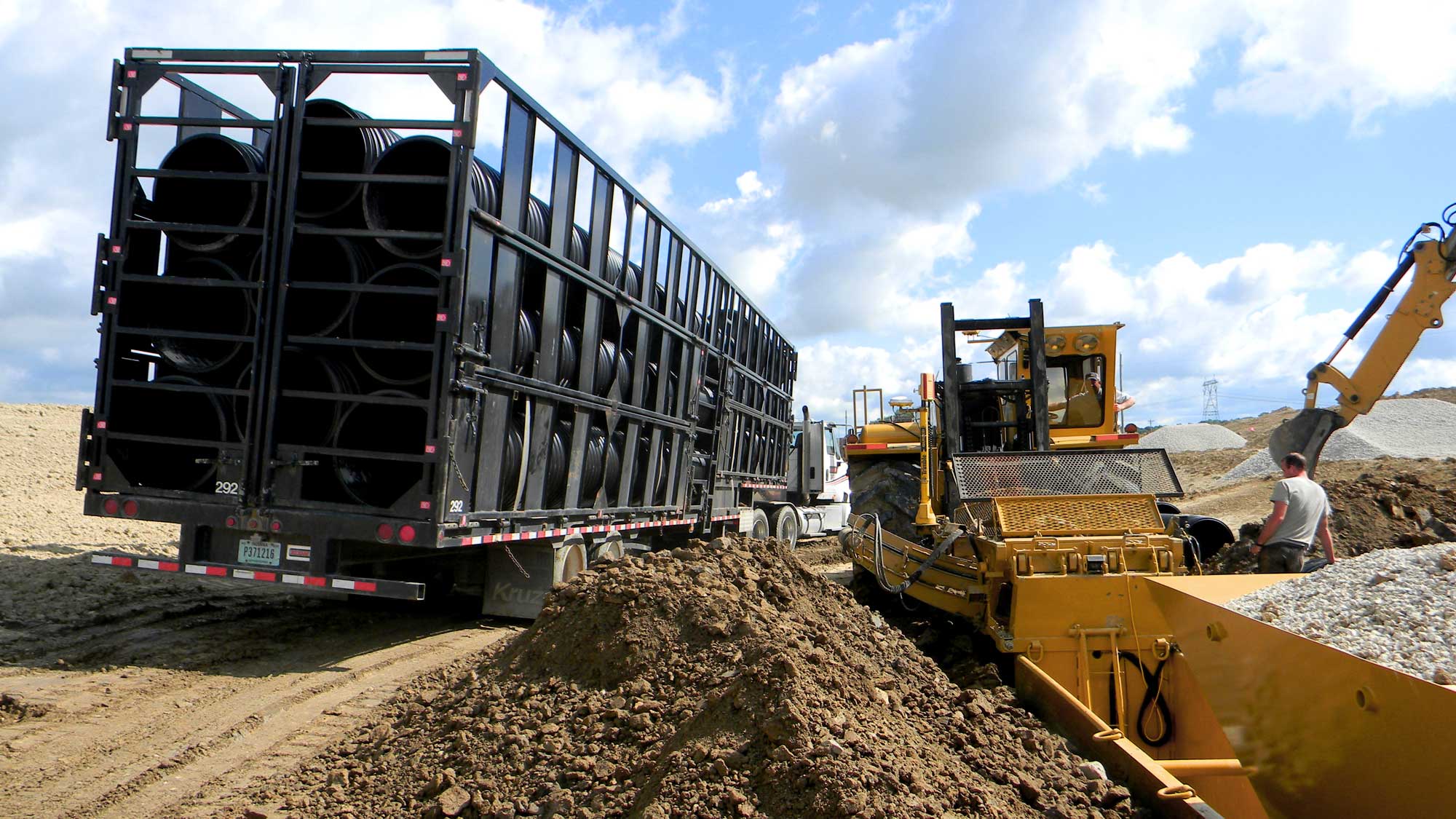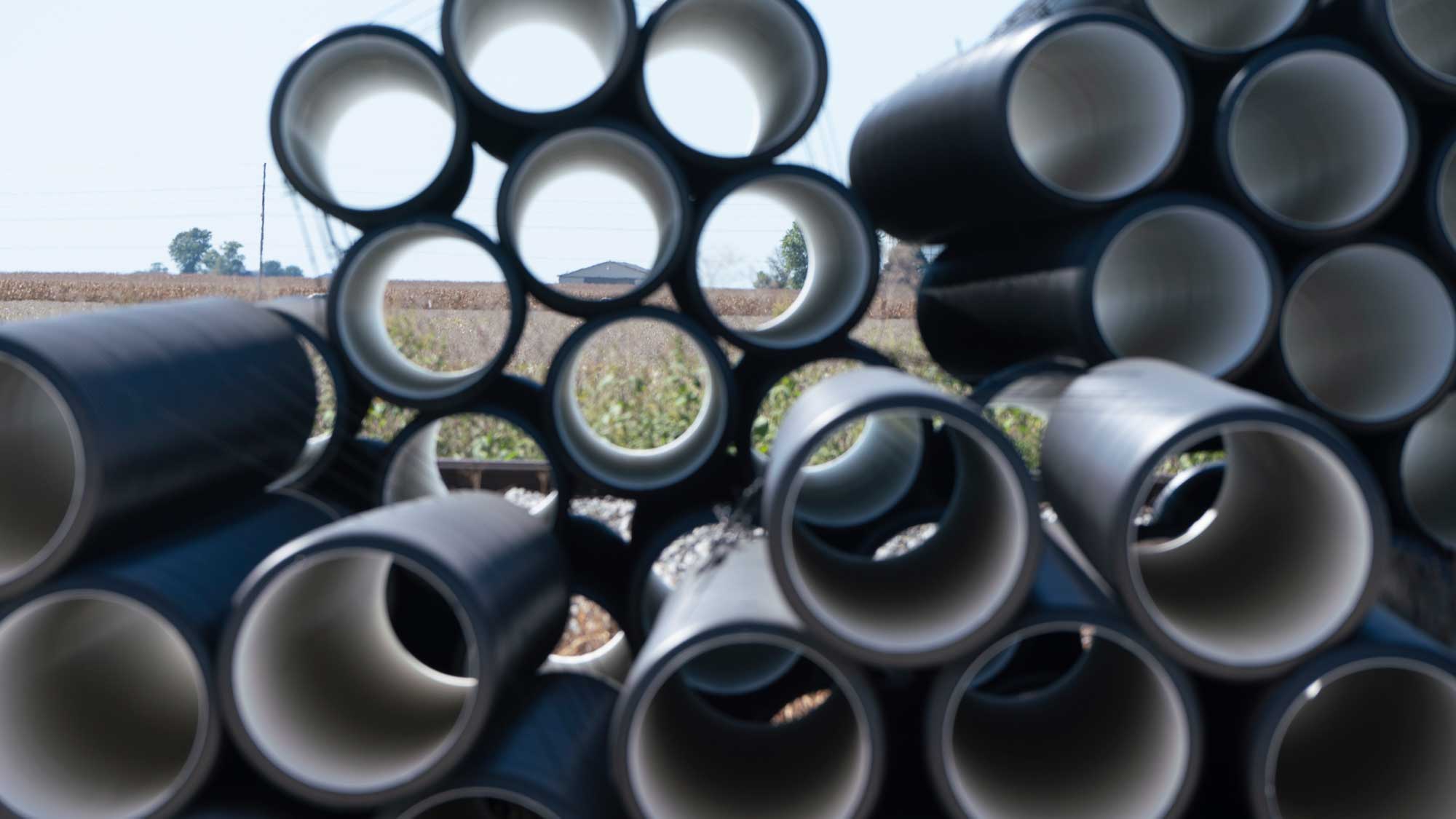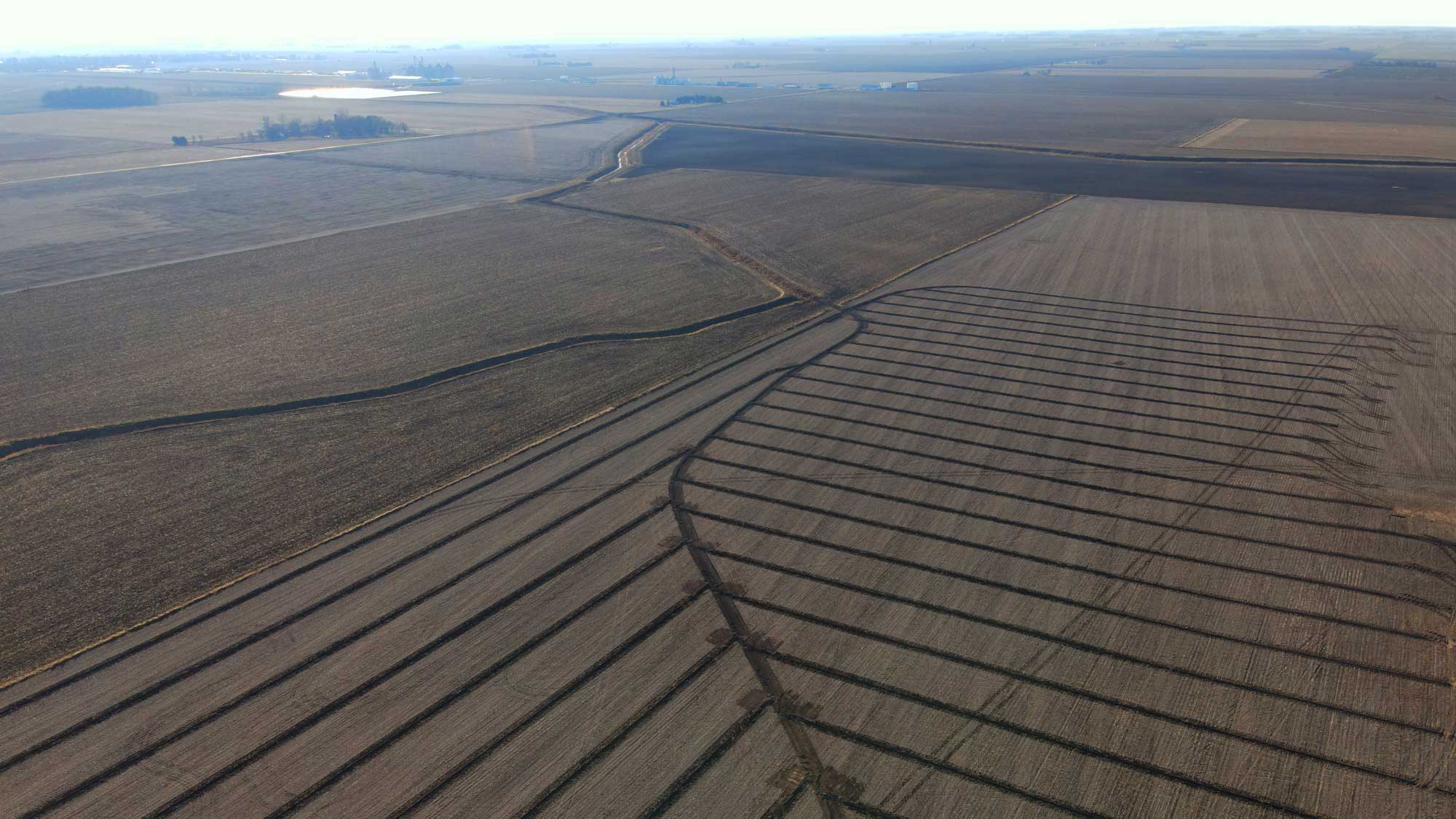As seen in the Tried & True Spring 2024 issue
Rainfall, a vital component of nature’s cycle, is eagerly anticipated by growers worldwide. It’s the heartbeat of agriculture, quenching thirsty crops and nurturing soil. However, this natural gift can quickly turn into a challenge when it becomes excessive. Heavy rainfall leads to a myriad of problems–from runoff and poor soil conditions to a significant impact on crop yields. In this brief exploration, we’ll delve into the impact of excessive rainfall in both agricultural and non-agricultural settings, and highlight the often overlooked, critical importance of drainage solutions in our functioning society.
Excessive Rainfall and Agriculture
Proper drainage plays a vital role in contemporary agriculture, extending beyond the mere elimination of surplus water. Inadequate drainage in agricultural fields leads to several challenges. Excessive rainfall can cause runoff and soil erosion–stripping the soil of valuable nutrients and structural integrity–diminishing its fertility. Furthermore, waterlogged conditions from excessive moisture harm plant growth by depriving roots of oxygen, leading to diseases and stunted development in the crops. These factors collectively contribute to reduced crop yields, as saturated fields delay planting and harvesting as well as heighten the risk of disease and pest infestation. Therefore, proper drainage is not just an add-on but an essential component for maintaining soil health and optimizing crop productivity.

Source: weather.gov
Urban Drainage: A Shield Against Flooding
The significance of effective drainage extends well beyond agricultural fields. Urban areas, public parks, schools and other communal spaces greatly depend on efficient drainage systems.
The significance of proper drainage systems becomes particularly evident in urban landscapes for their role in managing rainwater and preventing the risks associated with urban flooding. In cities, even moderate rainfall can lead to significant challenges if not properly managed. Streets can quickly become flooded, disrupting traffic, impeding access to emergency services and even causing damage to vehicles and property. Even just a tenth of an inch of standing water on a road can lead to hydroplaning, where a vehicle loses traction and control, posing serious safety risks. More and more cities are taking steps to improve their water management systems to avoid these hazards.
Flash floods specifically can cause damage to urban areas when rainfall comes fast. For example, Kentucky saw one of its worst floods on March 1-3 in 1997 due to a foot of rain. The storm resulted in significant financial impacts, with damages exceeding 500 million dollars and affecting over 14,000 homes. This event claimed 33 lives. The tragedy included several incidents where individuals were swept away by floodwaters while in their vehicles, along with others who encountered fatal outcomes during river activities or upon returning to their residences, finding themselves overwhelmed by the swiftly rising waters.
We can even look at the recent mudslides in California to see the damage that flash flooding from rainfall can cause. The Associated Press wrote on the mudslides saying, “One of the wettest storms in Southern California history unleashed at least 475 mudslides in the Los Angeles area.” While these storms are extremes, proper drainage can help minimize damages by keeping flooding to a minimum. Therefore, implementing water management systems is essential for safeguarding urban infrastructure against severe weather impacts, emphasizing their critical role beyond simple utility.
Parks and Recreational Areas
To maintain accessibility and health, proper drainage in parks and recreational areas is crucial, particularly in regions prone to heavy rainfall. Without adequate drainage systems, these areas can quickly become inaccessible due to the formation of muddy puddles and waterlogged grounds. This not only detracts from the aesthetic appeal of the park but also makes it challenging for visitors to use pathways, picnic areas and sports fields. For instance, in Central Park, New York, innovative drainage solutions were implemented to address this issue, involving the installation of permeable pathways and strategically placed drainage channels. These measures ensure that even after torrential rains, the park remains accessible and usable for the public.
Inadequate drainage can lead to the deterioration of park infrastructure. Wooden structures, such as benches and play equipment, can rot when exposed to persistent moisture, compromising the structural integrity of the equipment and making them unsafe to use. Similarly, paved areas can suffer from erosion and potholes, creating hazards for visitors. The introduction of sustainable urban drainage systems can greatly reduce such issues, preserving both the natural beauty and the infrastructure of parks.
The health implications of stagnant water in recreational areas are also important to consider. Stagnant water serves as a breeding ground for mosquitoes, which can transmit diseases like West Nile virus, Zika and malaria. Efficient drainage system help to eliminate these breeding sites, thereby protecting public health.
In areas like the Florida Everglades, where mosquito-borne diseases are a significant concern, managing water levels through comprehensive drainage and water control systems has been a key strategy in mitigating these risks.
Additionally, stagnant water can harbor harmful bacteria and parasites, posing a risk to both humans and wildlife. For example, waterborne pathogens like Giardia can thrive in poorly drained areas, leading to gastrointestinal illnesses. Children, who are more likely to play in puddles or poorly drained areas, are particularly vulnerable to such health risks.
To address these concerns, many parks have started adopting advanced drainage solutions. Bioswales and rain gardens can be utilized not only to improve drainage but also to enhance the park’s natural beauty. These features filter and direct runoff water, reducing the likelihood of stagnant water pools forming.
Effective drainage in parks and recreational areas is essential for maintaining their usability and ensuring public health and safety. By employing innovative drainage solutions and regular maintenance, park authorities can significantly mitigate the risks associated with excess rainwater and poor drainage systems.
School Grounds: Safe and Supportive Learning Environments
Our kids are the heart of our lives. So we should be attentive to the potential dangers in their schools. Efficient drainage systems are a small but important part of what helps create safe and supportive environments for schools, especially in outdoor areas like playgrounds and sports fields. These systems ensure that these critical areas remain dry, safe and conducive to both learning and physical activity, regardless of the weather.
Effective drainage is key in preventing the accumulation of water on school grounds, which significantly reduces the risk of slips and falls among students. Waterlogged playgrounds and sports fields not only hinder outdoor activities but also pose serious safety hazards. For instance, a study conducted in a school in Seattle revealed a noticeable decrease in playground accidents following the installation of a new drainage system, highlighting the direct impact of such infrastructure on student safety.
Additionally, good drainage systems can contribute to the aesthetic appeal of the school environment, creating a more inviting and pleasant atmosphere for students. This not only enhances the physical appearance of the school but can also have a positive impact on students’ attitudes towards their school and learning.
A Collective Effort
Efficient drainage in public spaces is a shared responsibility. It requires not just the implementation of well-designed systems but also community awareness and involvement. Initiatives like community clean-up drives can help maintain local drainage systems, ensuring their efficiency and longevity.
The role of efficient drainage systems is pivotal across various facets of our lives–from the fields that provide our food to the urban streets we traverse daily to the public spaces where we seek recreation and relaxation. Investing in and maintaining these systems is not just a practical necessity but a commitment to the health, safety and well-being of our communities
Shower thoughts
Interesting stats and facts
- In 2022 the U.S. suffered $177 billion of inland flooding damage.
- Hawaii has the highest average annual rainfall in the US with 63.7 inches of rain.
- Nevada has the lowest average annual rainfall in the US with 9.5 inches of rain.
- Los Angeles recorded at least 475 mudslides in February 2024.
- Most raindrops take at least 2 minutes to fall to the ground.
- Freefalling raindrops are actually shaped more like hamburger buns.
- It only takes 0.1 inches of standing water to cause hydroplaning on the road.
- Some tropic areas can have up to 900 inches of rain a year.











